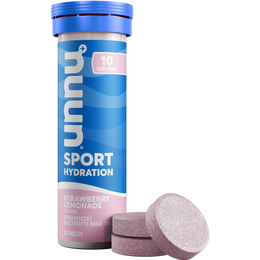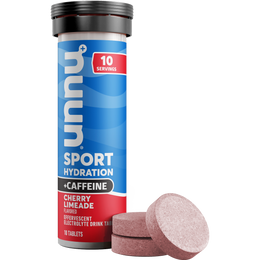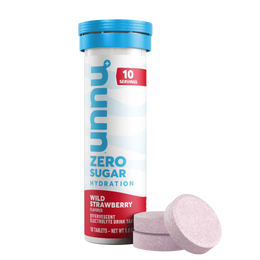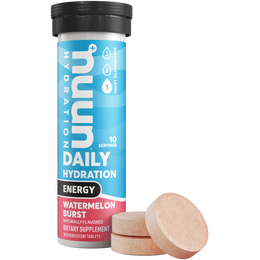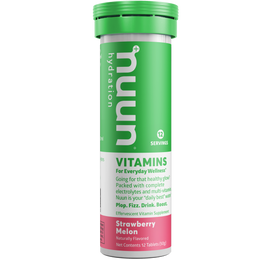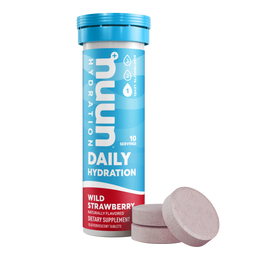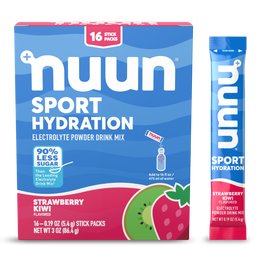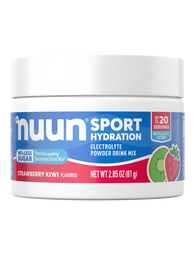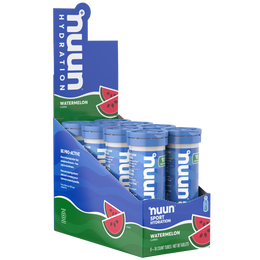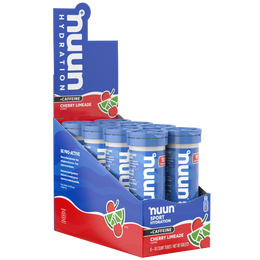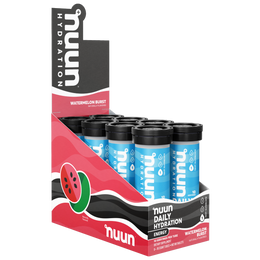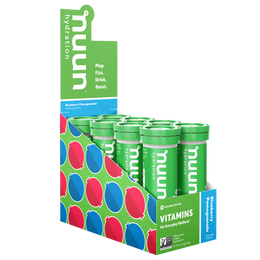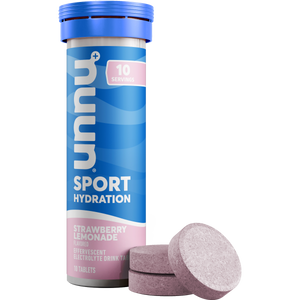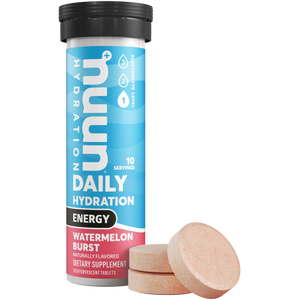Looking to take your endurance training to new heights? Learn about the benefits of altitude training, some techniques and programs, and the importance of proper hydration and electrolyte balance.
What Is Altitude Training?
Like the name suggests, altitude training involves training your body to perform at higher altitudes with the goal of better performance at lower altitudes. At higher elevations, there’s less oxygen in the air, which will make your workouts feel more difficult in the moment. However, continuing to train at higher altitudes may force your body to adapt to lower levels of oxygen, so that when you compete at lower elevations, you’ll perform better due to the increased oxygen being sent to your muscles.
What Does High Altitude Mean?
If you live in a mountainous area already, you might be familiar with how altitude can affect your body. Here’s a breakdown of the different levels of elevation:
-
Low altitude
Places that are around 4000 feet above sea level or lower are considered to be low altitude. This doesn’t mean that it has to be a completely flat area; Helena, Montana is at 3875 feet. The name comes from the fact that this is the height where elevation starts to affect humans. So, if you’re coming from somewhere below sea level, like New Orleans, even so-called low altitude will probably feel very different than what you’re used to. -
Moderate altitude
From 4001 feet up to about 6800 feet above sea level, you’ll feel the decreased oxygen, even though this is referred to as moderate elevation. Places in the US that are considered to be in this range include Harrison, Nebraska (4865 ft), Provo, Utah (4551 ft), and Castle Rock, Colorado (6224 ft.). -
High altitude
If you find yourself in the range of 7000 to 9800 feet, you’re not only at a high altitude, you’re also at risk for AMS (Acute Mountain Sickness). Breckenridge (9600 ft) and Aspen (8000 ft) in Colorado are renowned for mountain sports. -
Very high altitude
Above 9800 feet above sea level, you’ll find yourself at a very high altitude. To reach this sort of elevation, you’ll need to travel internationally for an urban setting: Cusco, Peru (11,152 ft) and Lhasa, China (12,001 ft) are notable locations. El Alto, Bolivia is the city with the highest altitude in the world, at 13,615 feet above sea level.
Whether you’re a runner, a biker (like Libby Caldwell!), swimmer, skier or any other kind of endurance athlete, incorporating this sort of training into your program can have some incredible performance benefits.
How to Do Altitude Training
Incorporating high altitude training into your routine might seem daunting at first bit. Try these tips to start increasing your altitude and performance:
- Make sure your heart is fit. Preparing your heart for higher altitudes before you get started can go a long way to helping you acclimate. Interval hill training is a great way to do this.
- Increase and decrease elevation gradually. Don’t go too high, too quickly. Instead, allow your body to get used to the altitude. When you return to a lower elevation, ease back into training to let your body adjust.
- Practice breathing exercises. These can increase your lung capacity and help you stay calm and centered when there’s less oxygen in the air.
- Talk to your doctor. Check in with your healthcare provider and trainer (if you’re working with one) about your physical fitness. You’ll want to be especially cautious if you have an existing condition like diabetes, asthma, or high blood pressure.
- Reduce intensity. Due to low oxygen levels, you won’t be able train as hard as you do at sea level without injuring yourself. Instead, you’ll need to slow down and work out with slightly less intensity to safely adapt to the altitude.
- Consider your diet. If you’re working with a nutritionist or a dietitian, make sure you correct any iron deficiencies before starting to train at altitude. Low levels of iron can negatively impact hemoglobin, which is the protein in your red blood cells that carries oxygen.
What Happens When You Train at High Elevation
When you’re working out in high-altitude environments, there is less oxygen in the air, so when you take a deep breath, you draw in less oxygen per breath than you would at lower altitudes. That means each breath will deliver less oxygen to your muscles.
As your body adapts to the elevation, your body increases the production of red blood cells. These blood cells are responsible for transporting oxygen from the lungs to the muscles, and an increase in their production can enhance an athlete's ability to utilize oxygen during exercise. Your amazing body is trying to adapt to the fact that there less oxygen available by producing more ways to capture it.
Another adaptation that occurs at high elevation is an increase in the concentration of capillaries, the smallest blood vessels in the body. These vessels are responsible for delivering oxygen and nutrients to the muscles and when they are more concentrated, the body is better able to deliver oxygen to the muscles during exercise. This can improve an athlete's endurance capacity.
Potential Benefits of Altitude Training
Other benefits you can gain from training at higher altitudes are:
-
Increased oxygen flow to muscles
Since your body is producing more red blood cells and increasing the concentration of capillaries, you’ll be able to send more oxygen to your muscles. When you exercise, your muscles become fatigued when they don’t receive enough oxygen, but if you’ve been altitude training, you won’t fatigue as quickly since you have more blood which delivers more oxygen to your muscles. -
Enhanced aerobic ability.
High altitude training can increase the amount of oxygen that your body can consume (or maximal oxygen intake) during intense activity. The more oxygen you can consume, the better your endurance. A study of elite runners showed that after 11 days of altitude training, they were able to increase their maximal oxygen intake.1 -
Greater tolerance for lactic acid.
Your muscles produce lactic acid when you’re exercising at a high intensity. If it accumulates, it can lead to muscle fatigue, which means you’ll get tired and have to slow down or stop. Altitude training may help your body handle higher levels of lactic acid, which means it will take longer for you to get fatigued.
Potential Drawbacks of Altitude Training
In addition to working with your healthcare provider and professional trainer, here are some other altitude training aspects you should consider before you start:
- Access and time. If you don’t already live in a high-altitude area, you’ll find that altitude training has certain demands. To reap the benefits, some athletes should spend 12-16 hours a day at a higher elevation (around 8000 ft) but train at or below 4000 ft in a strategy called “Live High; Train Low.” Others prescribe to an altitude training program called “Live High, Train High” in which all time is spent at high elevation. You’ll need to accumulate 2-300 hours at altitude to see benefits, which is a time commitment of a few weeks and is why this sort of training is more effective for elite athletes (professional or Olympians) than the average athlete.
- Altitude sickness. If you don’t allow your body to adjust to the elevation or if you go too hard, too soon, you may experience altitude sickness. Symptoms include headache, nausea, vomiting, and lack of appetite, all of which are detrimental if you’re trying to train.
- Edema. Severe cases of altitude sickness can lead to cerebral edema (brain swelling) or pulmonary edema (lung swelling).
- Height matters. The sweet spot for effective altitude training may vary from person to person. If you go too high, you may have trouble sleeping and recovering from workouts. If you stay too low, you may not get the results you want.
Hydration During Altitude Training
Athletes of all stripes should stay hydrated, but this is especially true for those who are training at altitude. Even if you’re gradually acclimating to your new elevation, dehydration is likely to occur within the first few days at altitude due to what’s called “insensible” fluid loss via breathing and sweat. You also have to pee more often at higher altitude.
With these thoughts in mind, you’ll need to compensate for these losses by staying hydrated. A general recommendation is 1-1.5 additional liters of water, but your own needs may vary. While you’ll need to drink more water, take care not to overdo it.
Tips to Stay Hydrated and Healthy While Training at Altitude
Staying hydrated at altitude should certainly be top of mind, as dehydration can absolutely derail your training schedule. Follow these tips to stay properly hydrated while at altitude.
- Be aware of your elevation. Once you cross the 3000 feet above-sea-level threshold, your body will start to have different needs for hydration and fueling. Understand where you are and take note of how your body responds.
- Hydrate, hydrate, hydrate. You should already be hydrating before, during, and after your workouts, but higher elevation means that you should aim to drink at least 25-50% more than you usually do. Athletes should be drinking steadily throughout the day so they don’t get dehydrated.
- Look for signs of dehydration. It’s easier to become dehydrated when you’re at higher altitudes; the air is usually dry, and you will tend to sweat and pee more than you would at a lower elevation.
- Sweat rate may be key. People’s bodies respond differently to altitude and weather conditions. One athlete may be losing more water weight during workouts than another and should adjust their fluid intake to mitigate this. A sweat test is a great way to determine a baseline before you begin altitude training.
- Add electrolytes! If you’re sweating a lot, you’ll need to replace the electrolytes you’ve lost. Sodium is the most important one to monitor because without it, your performance can suffer, as can the functions of your basic nervous system and muscles. Electrolytes play a role in helping your body balance fluids, staving off muscle cramps, and helping your muscles contract.
While altitude training can be an incredible way to level up your endurance training, taking care of yourself while at higher elevations is crucial for your performance and overall health. Make sure you’re drinking enough water before, during, and after your workouts and replacing your electrolytes with Nuun Sport tablets or sport powder.
References:
1. Bahenský P, Bunc V, Tlustý P, Grosicki GJ. Effect of an Eleven-Day Altitude Training Program on Aerobic and Anaerobic Performance in Adolescent Runners. Medicina. 2020;56(4):184. doi: https://doi.org/10.3390/medicina56040184
